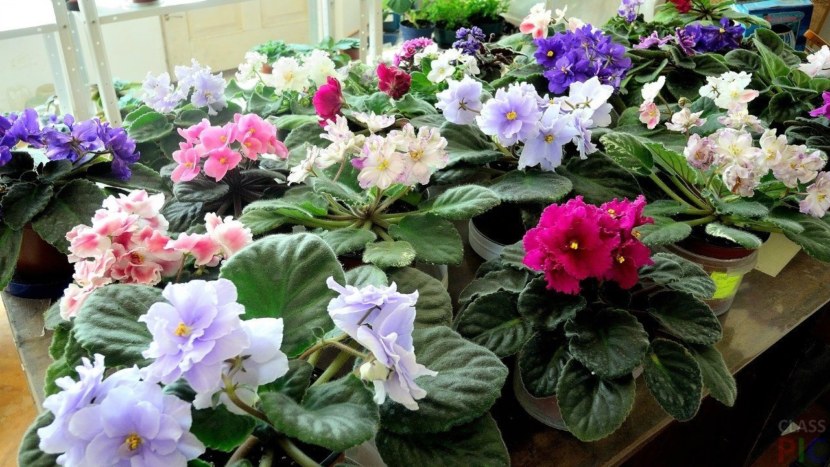 Violet (Saintpaulia) appeared on home windowsills about 200 years ago. A variety of varieties and colors, frequent flowering, unpretentious care - always attracted gardeners. In order for the plant to bloom more often, it is reasonable to select a place for it in the house for it, given the regime of watering, temperature, lighting and the number of dressings.
Violet (Saintpaulia) appeared on home windowsills about 200 years ago. A variety of varieties and colors, frequent flowering, unpretentious care - always attracted gardeners. In order for the plant to bloom more often, it is reasonable to select a place for it in the house for it, given the regime of watering, temperature, lighting and the number of dressings.
The size of the pot is also important, which affects the appearance of buds and flower development.
Content
Pot and soil selection
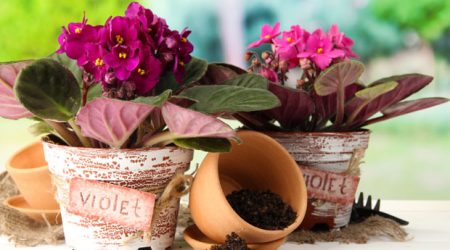 Violet roots are located on the surface of the earth, this must be considered when buying containers for a flower. Rhizome is located closer to the light and nutrients. For this reason, an earthen substrate must pass air and moisture well.
Violet roots are located on the surface of the earth, this must be considered when buying containers for a flower. Rhizome is located closer to the light and nutrients. For this reason, an earthen substrate must pass air and moisture well.
Container selection
The size of the tank depends on the hybrid and the age of Saintpaulia:
- young animals are planted in containers measuring 5 cm by 5 cm;
- medium-sized flowers are grown in a 7 cm by 7 cm pot;
- an adult plant, large, prefers a capacity of 10 cm by 10 cm.
When the violet becomes cramped in its old pot, they take it out, gently shake it off the ground and transfer it to a 10 by 10 cm pot with new soil. In large pots, miniature violets mainly develop leaves, few flowers appear. The soil, which is not braided by roots, turns sour, fungi and insects develop in it.
A container is selected less by three diameters from the outlet of the plant.
Material used for the manufacture of containers:
Ceramic pots covered with glaze do not “breathe”. It is impossible to make a hole in them. Without glaze, the container changes color over time, salt appears, but in such pots the violet feels better.
Plastic capacity is light, simple, durable, flexible. The transplant process is easier than in other options. Lack of packaging - plastic does not allow air to pass through. The way out of the situation is to make drainage holes.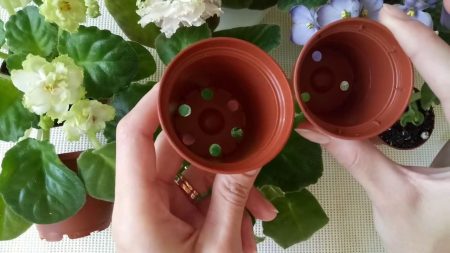
Plastic multi-colored containers are only outwardly beautiful. Aniline paints used for pots poison plants, leading to their death.
In a clay pot, violet feels comfortable. Clay passes air and moisture well. In clay flowerpots, the culture is less likely to get sick. The disadvantage of such containers is their fragility, the pots break easily and break. In addition, clay containers are heavy and you can’t put them on glass shelves. In the sun, the flowerpot warms up strongly, the soil dries quickly.
Drainage holes and drainage are necessary for violets, stagnation of moisture can destroy them.
How to prepare the ground
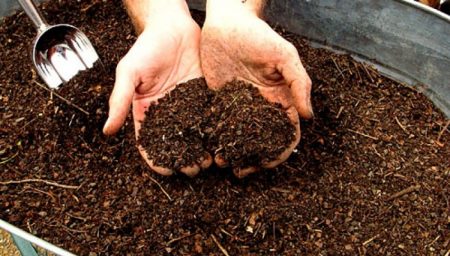 Senpoly prefer slightly acidic pH 5-6. Dolomite flour, limestone, wood ash are added to acidic soil (a spoonful of ash per 2 l of water). Neutral environment is not suitable for violets.
Senpoly prefer slightly acidic pH 5-6. Dolomite flour, limestone, wood ash are added to acidic soil (a spoonful of ash per 2 l of water). Neutral environment is not suitable for violets.
The earth mixture for senpolia is made breathable, it can not be tamped. It is better to take land on which nothing has long grown. Soil is prepared independently: earth, sand, peat (4: 1: 1). It is advisable to take the soil under deciduous or coniferous trees. It is possible to combine deciduous and sod land.
Charcoal, potassium and phosphorus are added to the ground. Coal feeds and removes excess fluid from the soil. It is laid out in large pieces on the bottom of the pot, like drainage, and the small one is mixed with the ground.Coconut fiber absorbs excess moisture and can be laid out at the bottom of the container. The proportion of fertilizing should be observed in accordance with the instructions. If you overfill the plant with nitrogen, lush greens will appear, but there will be no flowers. If there is a shortage of nitrogen or phosphorus, grind powder from the eggshell. In an alkaline environment, nitrogen fertilizers are poorly absorbed by violets.
Natural materials, such as vermiculite or perlite, serve as drainage. Foam or expanded clay is also used. Drainage is purchased at a flower shop, where you can also buy ready-made earth mix and special fertilizers for violets. Moss is used to disinfect the soil. It is poured with boiling water, dried and ground, laid on top of the earth around the flower.
Earthen mix options:
- nutrient land, peat, moss, charcoal (1: 2: 1: 0.5);
- turf land, perlite, sphagnum moss, coal (6: 1: 1: 1);
- peat soil, sheet soil, vermiculite, coal (3: 1: 1: 0.5);
- nutrient soil, peat, perlite, Seramis granulate, coal (5: 1: 0.5: 0.5: 0.25) superphosphate (3-4 peas).
Signs of acidic soil: unopened buds fall, turn yellow, lower leaves of violet fall.
Lighting, temperature, humidity for Saintpaulia
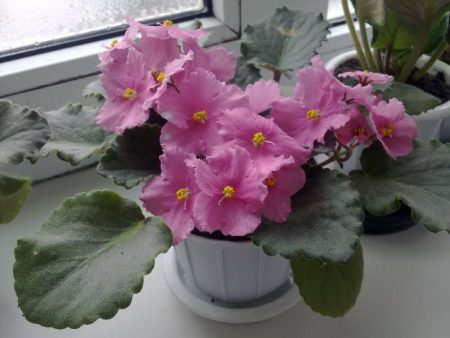 It is important for violets to find a place in the house with good lighting, suitable air temperature and humidity. Under natural conditions, the senpolia grows in shaded areas. An excess of light causes stunting, yellowing of foliage, the rosette becomes flat, which slows down the formation of peduncles. But in poorly lit places of flowers you can not wait. Need to look for a window sill with diffused light.
It is important for violets to find a place in the house with good lighting, suitable air temperature and humidity. Under natural conditions, the senpolia grows in shaded areas. An excess of light causes stunting, yellowing of foliage, the rosette becomes flat, which slows down the formation of peduncles. But in poorly lit places of flowers you can not wait. Need to look for a window sill with diffused light.
Shine
For violets, the average duration of daylight hours is 10-12 hours. It is very important that the dark time of the day lasts at least 6 hours. During this period, the accumulation of hormones responsible for the formation of peduncles occurs.
Western, northern and eastern windows are protected from intense daylight. In the summer, windows are shaded with paper, fabric, curtains, tracing paper, using blinds. In the southern regions of the country, even in winter there is enough light for plants. In the northern and western regions, from October to March, there is not enough lighting, violets stop blooming and stop growth.
To compensate for the lack of lighting, fluorescent lamps are used. For one shelf (50 to 130), 2 lamps with a power of 40 W are enough, from the flowers they are placed at a height of 30 cm. There are varieties of Uzambara senpolis that need a lot of light. If there are a lot of flowers on the shelf, then they are periodically swapped so that the light is evenly distributed between the plants. The end sections of the lamps (5 cm) are not sufficiently lit for flowers.
Humidity
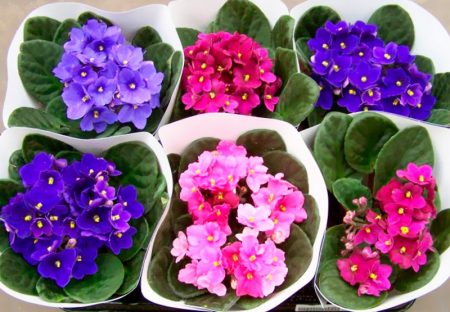 The humidity level of the violet room is 50-60%. Under such conditions, flower stalks are formed more often, flowers appear large and do not fade for a long time. In winter, the batteries start to work, the air becomes dry. They solve the problem in several ways:
The humidity level of the violet room is 50-60%. Under such conditions, flower stalks are formed more often, flowers appear large and do not fade for a long time. In winter, the batteries start to work, the air becomes dry. They solve the problem in several ways:
- using humidifiers;
- plants are sprayed with water daily from a sprayer;
- near pots have containers with water;
- use green moss on the surface of the soil, it holds moisture in the pot.
Transplanted plants, children and young animals need increased humidity. At a moisture level of more than 70% fungal diseases develop, the evaporation process, which is important for plants, stops.
Temperature
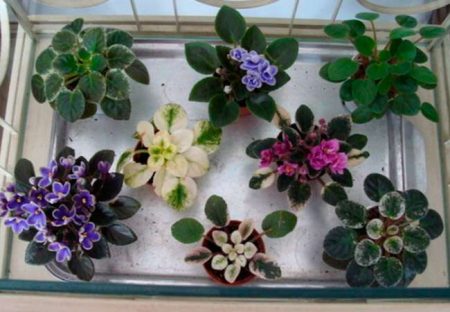 Senpolia does not like heat. Comfortable temperature for the eastern beauty is considered to be 19-22 degrees. At low rates up to 13 ° C * development slows down, at higher temperatures above 25 ° C * the appearance of violets changes.
Senpolia does not like heat. Comfortable temperature for the eastern beauty is considered to be 19-22 degrees. At low rates up to 13 ° C * development slows down, at higher temperatures above 25 ° C * the appearance of violets changes.
After spring plantings, the development of the plant falls on the summer period, after a few months the first flowers appear. If seedlings were planted in the fall, then a cooler period affects the development of the root system. Buds often form in spring or summer.The plus is that young animals do not fall under destructive sun rays and the number of children from one petiole is greater than that of a spring sprout.
Large temperature differences up to 10 degrees negatively affect the appearance of flowering plants. Fungal diseases may occur.
It is necessary to take into account the temperature under artificial lighting. After all, the lamps give additional heat. When they are turned off, the temperature indicators drop sharply. To avoid unpredictable consequences, thermometers are installed near the shelves. Violets die at 5 C * heat. For flowers to appear all year round, a stable temperature in winter and summer is needed. Fans, air conditioners, ventilation of the room can help with this. You can lower the plants to the floor, turn off the additional lamps. In summer heat, violets bloom very rarely, flowering begins in the fall, when it becomes cool.
Watering violets
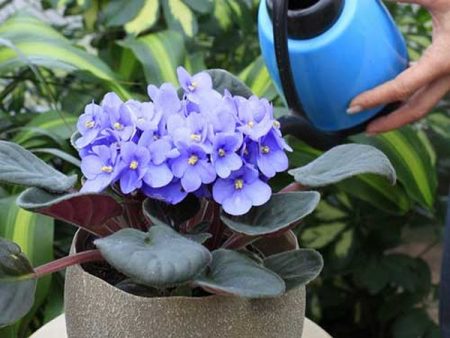 For irrigation, you need protected water. The temperature of the liquid should be higher than the temperature of the air in the room. The room temperature is 18 ° C * low for senpolia, the water is heated to 23-26 ° C *.
For irrigation, you need protected water. The temperature of the liquid should be higher than the temperature of the air in the room. The room temperature is 18 ° C * low for senpolia, the water is heated to 23-26 ° C *.
The main method of watering is from above along the edge of the tank. Water should moisten the entire earth, it will become noticeable in the fluid emerging from the drainage holes. Excess water should be removed from the sump. For several days the plants are not watered.
If the earth is dry, then the pot is immersed in water until the earth is saturated with moisture. Leaves are sprayed with water. The container is taken out of the water, the excess liquid is allowed to drain, the earth is added on top, if necessary.
Water the plants with a watering can with a long nose or a douche to prevent the decay of the outlet when moisture gets in. If salts appeared on the surface of the earth, then in the pot they change the earth or replace the topsoil. You can moss on top of the soil, it will absorb salt. After 2 weeks, it is replaced with a new one.
To save time, water is poured on pallets and left in them flower pots for half an hour. Then the remaining liquid is drained.
A capillary mat is used to simplify watering. The mat is impregnated with water or a liquid with nutrients, immersed in the holes of the pots and the wet material gradually gives moisture to the flower. An irrigation mat is placed on a tray or tray. It is watered as the material dries. For mat use a special acrylic fiber, you can use an old blanket.
Violets are easier to tolerate drying than waterlogging.
To save water and time use the wick method. Plants independently regulate the amount of fluid consumed. A synthetic cord is buried in the ground of the pot, its other end is lowered into the water. A container with a flower (several pots are possible) is installed on a container of water on a wire rack, the wicks are lowered into the tank. Be sure to monitor the water level.
Feeding Saintpaulia
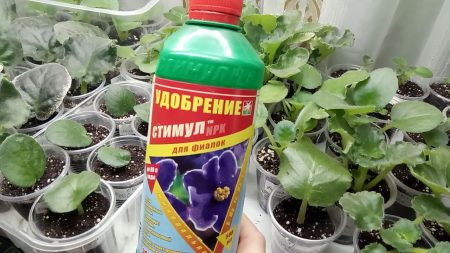 Within 2-3 months, the soil in a small pot is depleted. Without nutrients, the plant stops growing and blooming. Fertilizers for violets should contain trace elements and organic matter: nitrogen, potassium, phosphorus. Supplements are better to use complex, containing all the nutritional components for flowers:
Within 2-3 months, the soil in a small pot is depleted. Without nutrients, the plant stops growing and blooming. Fertilizers for violets should contain trace elements and organic matter: nitrogen, potassium, phosphorus. Supplements are better to use complex, containing all the nutritional components for flowers:
- phosphorus helps bud budding, promotes root system development;
- nitrogen activates growth, foliage acquires a saturated green color;
- potassium affects the flowering process; it develops in plants protection against diseases and pests.
The introduction of additives is carried out:
- after replanting young animals after 3 weeks;
- with temperature changes;
- with weakened stems and foliage;
- when there are no long flowers;
- during intense sunlight;
- with the appearance of harmful insects.
With root top dressing, fertilizers are applied through a pallet or from above into the ground along with water.If special or universal fertilizers are used, then they are bred in accordance with the instructions. After flowering, Saintpaulia is fertilized with complex mineral additives.
Foliar feeding occurs through foliage, it is sprayed with a nutrient composition. This method is complex, if you do not calculate the amount of fertilizer, then the excess will adversely affect the plants.
Recommendations:
- if the earth in the pot is dry, it must be watered, then fertilize the plant a day after watering;
- when violets are sick and look weak they do not fertilize;
- do not fertilize in hot weather and in high light;
- organic matter (manure, humus) alternate with minerals (superphosphate).
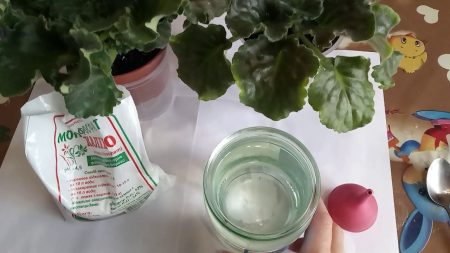
They feed violets no more than once a month.
Together with fertilizers, folk remedies are used: coffee grounds, decoction of onion peels, yeast, tincture of citrus peel, sweet water.
Diseases and Pests
A delicate flower can suffer from bacteria, viruses, fungi. As well as insects: spider mites, aphids, nematodes, mealybugs. To violet delighted with lush bloom all year, you need to protect it from pests and diseases.
Powdery mildew
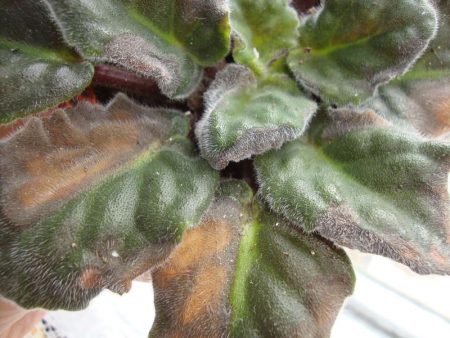 The first signs of her presence are a white coating on the leaves. Subsequently, ulcers appear on all parts of the plant. A large amount of nitrogen, contaminated soil, and the introduction of fungus with dirty tools can provoke a fungal disease. Fight fungi with fungicides - Topaz, Fundazole. They are bred in warm water, after spraying the pots are placed in a dark warm place.
The first signs of her presence are a white coating on the leaves. Subsequently, ulcers appear on all parts of the plant. A large amount of nitrogen, contaminated soil, and the introduction of fungus with dirty tools can provoke a fungal disease. Fight fungi with fungicides - Topaz, Fundazole. They are bred in warm water, after spraying the pots are placed in a dark warm place.
Fusarium
In the root system, the Fusarium fungus settles, which causes rotting of the roots. Signs: brown petioles of leaves, leaves fall off, the rhizome is easily separated from the ground. Measures: remove rotting parts of the plant, dry flowers, sprayed with fungicides.
Late blight
Through cuts on stems and leaves, fungus penetrates. Red spots on the foliage testify to it. The spores of the fungus persist in the soil and affect the entire plant. They destroy it, change the soil, sterilize the container. Fundazol, Benlat helps. As a preventive measure, superphosphate is introduced into the ground. Do not allow excessive humidity in the house.
Botritis (gray rot)
The disease covers the entire flower and leads to its death. Fluffy gray-brown spots appear on the leaves. Leaves with such spots are removed, the soil is watered with a weak solution of potassium permanganate. They dig a plant, treat the roots with potassium permanganate (solution), keep the earth in a freezer for a day, then leave it in a warm room. Sick violets are treated with fungicides according to the instructions.
Worms
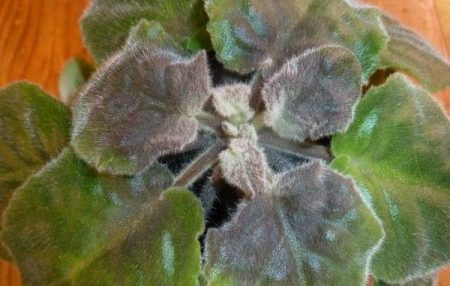 Insects bite various parts of plants, red spots appear in the bite sites. If you take the earth out of the pot, you can see small white down lumps. When several pots are located on a pallet, pests can move through water. Processed by the senpolia Aktara, Fitoverm, Actellik. Before planting, Bazudin is added to the ground.
Insects bite various parts of plants, red spots appear in the bite sites. If you take the earth out of the pot, you can see small white down lumps. When several pots are located on a pallet, pests can move through water. Processed by the senpolia Aktara, Fitoverm, Actellik. Before planting, Bazudin is added to the ground.
Aphid
Green pests are easy to spot. They drink the juice of plants, affect buds, flowers. Helps get rid of insects Mospilan, Actellik.
Ticks
The spider web pest leaves brown indented spots. The fight is carried out with the help of Fitoverm, Akarin, Actellik.
Nematodes
These worms can be seen under a microscope. They suck juices from the roots, releasing toxic substances. For prevention in the fight against microscopic worms, flowers are planted in peaty soil. Piperazine is added to each pot per tablet.
As a prophylactic, immunocytophyte is used (1 tablet in 2.5 liters of water). The drug strengthens the immunity of violets, they are less likely to get sick.
Pruning
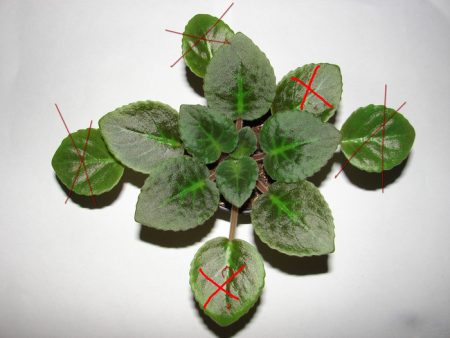 Twice a year, the violet is transplanted into new soil. The bush should have three tiers of foliage. To make the plant look attractively pruned, violets are rejuvenated. A sterile sharp knife is used for this.The upper part of the senpolia is cut off - the crown of the head, then the peduncles, several lower leaves are removed. They can be put in a glass of water, they will take root.
Twice a year, the violet is transplanted into new soil. The bush should have three tiers of foliage. To make the plant look attractively pruned, violets are rejuvenated. A sterile sharp knife is used for this.The upper part of the senpolia is cut off - the crown of the head, then the peduncles, several lower leaves are removed. They can be put in a glass of water, they will take root.
Stepsons appear in the axils of the foliage. These processes take away nutrients from the plant, delay the appearance of flowers, a compact bush grows and loses its attractiveness. In order not to make a mistake and not accidentally remove the peduncles, they wait until the shoots grow up.
Cut weak, pale, dry, old leaves. Over time, the trunk grows and exposes, this spoils the appearance of the flower. Transplanting violets will help to fix the situation, the stem is immersed in the ground and compacted. You can cut the outlet, leaving a part of the stem 3 cm under it. It is placed in water until the roots appear, then transplanted into a new container with nutrient soil.
Propagation of violets
Violet propagates: by children (sockets), leaves, seeds. It is better to use the vegetative methods of planting senpolia.
Transplant Outlets
When the bush forms several children, they are transplanted into another container. After all, it becomes crowded in a small pot, the mother flower suffers in such conditions. To do this, remove the plant from the pot, carefully separate all the sockets, without damaging the root system. Each baby is transplanted into an individual pot.
Strong and healthy senpolia tolerate a calm landing even during flowering.
Leaf propagation
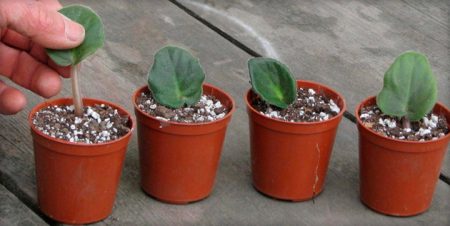 Leaves are carefully cut off from the plant, leaving no stumps (they can rot). Put in water for root sprouting. The length of the leaf petiole for planting should be at least 4 cm. For low-growing varieties, the height of the petiole is up to 1.5 cm. You can plant the leaf immediately after cutting in a container with drainage and light soil, composition: sand, earth, peat (4: 2: 1 ) Cover with a glass jar, move the pot to a warm, darkened place until germination. After rooting, the jar is removed.
Leaves are carefully cut off from the plant, leaving no stumps (they can rot). Put in water for root sprouting. The length of the leaf petiole for planting should be at least 4 cm. For low-growing varieties, the height of the petiole is up to 1.5 cm. You can plant the leaf immediately after cutting in a container with drainage and light soil, composition: sand, earth, peat (4: 2: 1 ) Cover with a glass jar, move the pot to a warm, darkened place until germination. After rooting, the jar is removed.
Seed way
Sowing violet seeds occurs in the following order:
- prepare pots with soil, moisten the substrate;
- additionally watered with a fungicidal agent according to the instructions;
- the ground should dry out;
- make grooves 1 cm deep;
- sow seeds, sprinkle with earth;
- water the soil mixture;
- the container is transferred to a warm place until germination.
At a temperature of 25 degrees sprouts will appear in 14-16 days. Lowering the temperature to 20 ° C * will delay seedlings for 2 weeks.
Small seeds of Saintpaulia recommend “dragee” before planting. As a result of this procedure, the seed grows and is easier to plant. Seeds are left in water for 2 hours, then transferred to a container with crushed coal and shaken. Seeds are enveloped in coal dust, coal serves as an antiseptic.
Flowering plants
If you conduct timely care, then problems with beautiful flowers will not arise. At the end of winter, violets have buds; in early spring, flowering occurs. Every 3 days, the pots are turned 45 degrees so that the senpolia does not fall on its side. Look after the flowers in the same way as before flowering. The main thing is to observe the irrigation regime and provide the plant with access to light. At this time, phosphorus and potassium fertilizing will be needed.
Actions after flowering
Some types of violets can bloom 8-10 months a year. After a long flowering period, the senpolia should rest. All forces and resources used to go to buds, now they are aimed at the growth of the upper tiers. To restore strength, the flower is fed with potassium and nitrogen. Do this no more than once a month.
What actions are taken when the flowers fade:
- old peduncles pruned, new ones left;
- the outlet is transplanted into another soil, the basis of which may be sphagnum moss;
- lower leaves are removed;
- the trunk during transplantation is buried to the cuttings;
- add soil on top, watered.
If the roots are damaged during planting, the violet will recover for about a month. After transplantation, new peduncles may appear, it is better to remove them.Violet should rest, grow stronger, grow new roots and please the hosts in the future with plentiful flowering for more than one season.

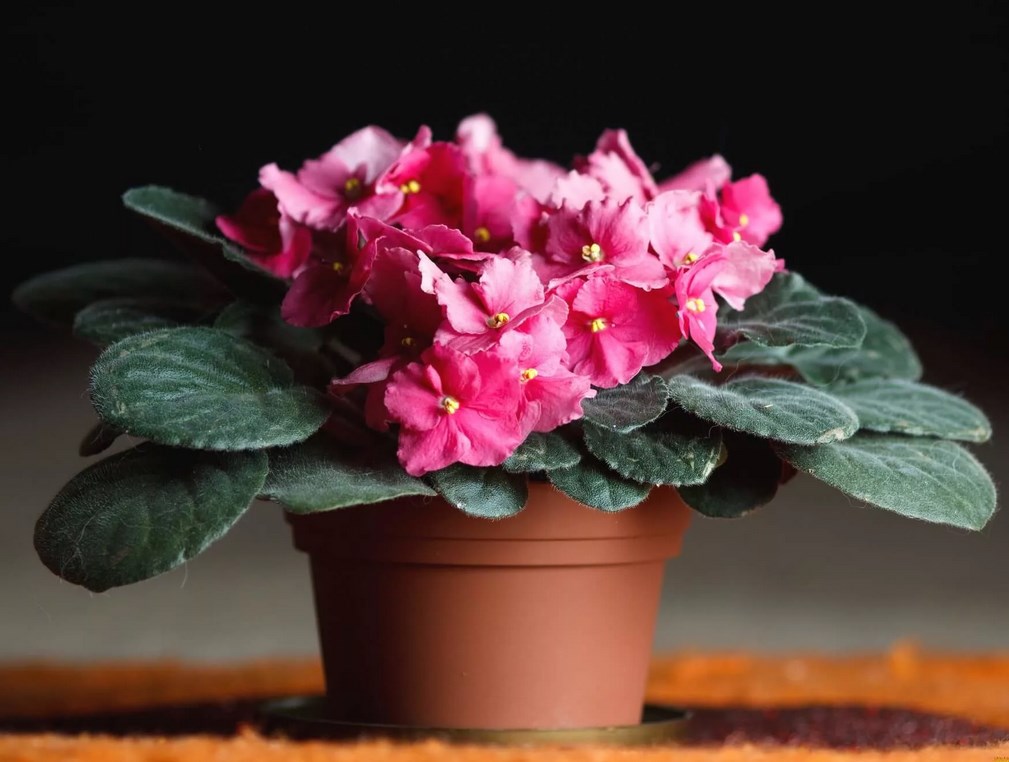
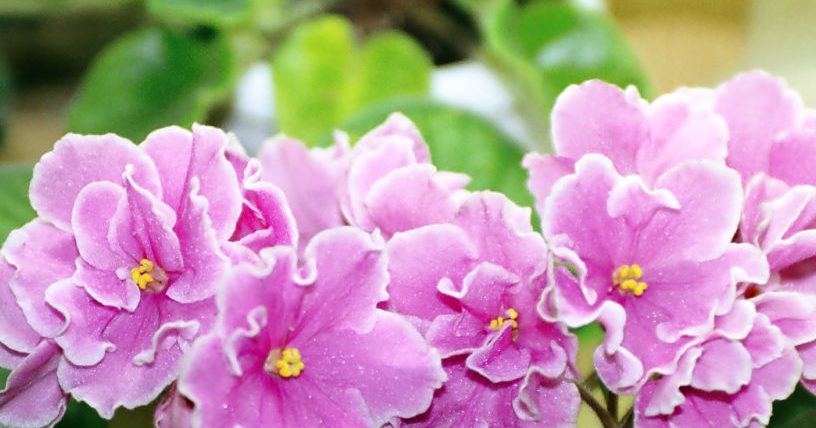
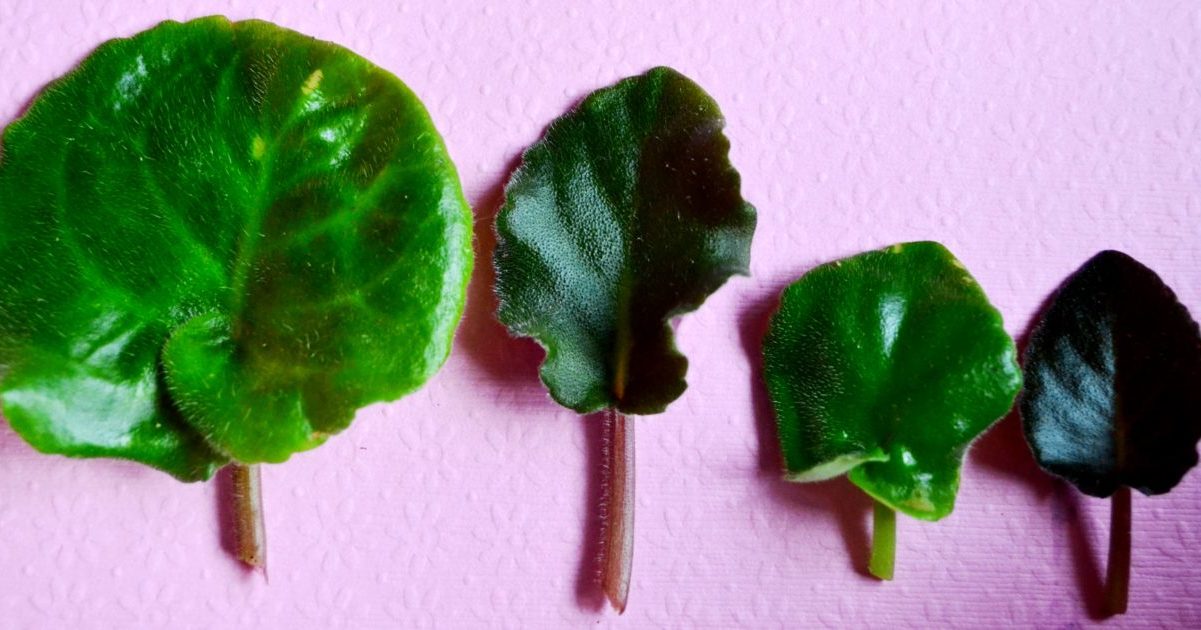
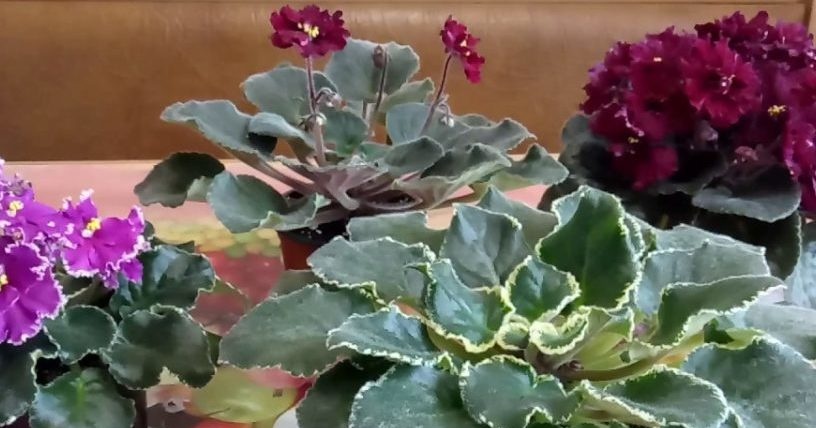 Why violets do not bloom - what to do to bloom and how to fertilize?
Why violets do not bloom - what to do to bloom and how to fertilize?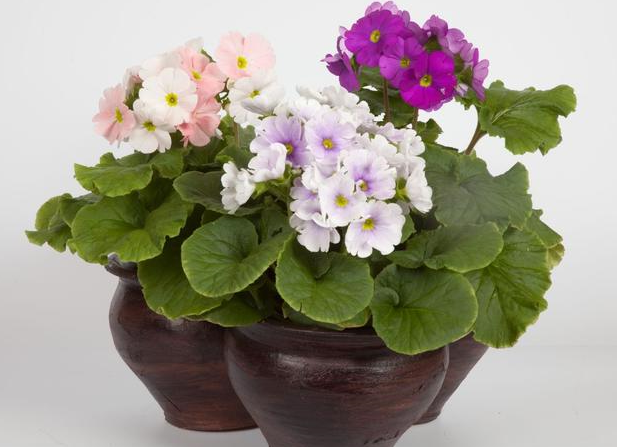 A few tricks and your violets will bloom 10 months a year!
A few tricks and your violets will bloom 10 months a year! “Frozen in time” - how much violets can bloom?
“Frozen in time” - how much violets can bloom?